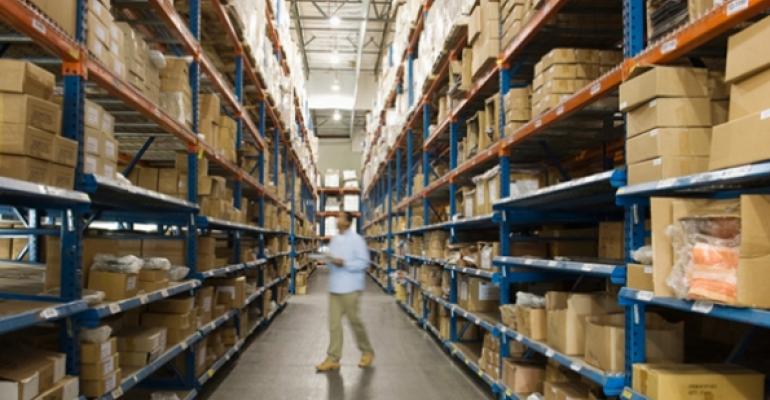Investors still see industrial properties as favorably as they did six months ago, despite global trade tensions and labor shortages.
Trade talks between the U.S. and China are looming over the industrial sector. Due to these ongoing trade tensions, retailers are importing larger quantities of products than normal, in an attempt to beat potential hikes in tariffs on goods from China.
Barring successful negotiations, the U.S. plans to raise the 10 percent tariff on $200 billion worth of Chinese goods that took effect in September 2018 to 25 percent this spring. The U.S. has already imposed 25 percent tariffs on $50 billion worth of Chinese goods. On the other hand, reciprocal tariffs imposed by the Chinese government lowered Chinese demand for American-made goods. If this trend continues, demand from manufacturing occupiers could decline, according to real estate services firm Colliers International.
American manufactures, one of the top growing occupiers of industrial real estate in 2018, added jobs in the sector from August 2017 to February 2019. This month, the sector lost jobs for the first time in 20 months. Though manufacturing currently makes up only a small component of demand for industrial space, according to industry experts, the sector was positioned to expand this year, according to the 2019 forecast from brokerage firm Marcus & Millichap.
However, this expected growth could be hindered due to the ongoing trade negotiations. Manufacturers’ business in China is down, tariffs are driving up costs and orders for capital goods are trending down since last summer, according to the U.S. Department of Commerce.
The overall demand for industrial real estate could take a hit this year if no deal is reached and tariffs increase to 25 percent, according to a market report from real estate services firm Colliers International.
None of these potential headwinds, however, are worrying investors eyeing the industrial sector.
“Certainly, the industry watches [trade discussions]. The industry cares about it because it knows of the relationship that exists between these relations and ultimately the flow of goods, and therefore, demand fundamentals for industrial space,” says Al Pontius, senior vice president at Marcus & Millichap. “However, I think there’s generally a belief that everybody is vested in a good outcome. There’s a belief that issues will be worked out.”
Investor demand for industrial properties remains strong because of the perceived safety of the product type, according to James Breeze, national director of industrial research at Colliers International. Office and retail sectors are going through enormous change, such as consumers preferring modern office spaces and choosing to shop online. Both these trends strengthen investor demand for industrial space.
First, retrofitting costs are much lower for industrial properties than office properties. If a tenant leaves an office space, the cost of modernizing that space to make it more competitive in today’s market is much higher than doing the same for an industrial property.
“You lose a tenant in industrial, the requirements for improvements to that space are significantly less than the requirement to repair an office space for the next tenant,” says Pontius. “So, when you look at tenant turnover cost exposure, industrial is comparatively favorable to, particularly, office, but also retail.”
The industrial sector is the primary beneficiary of the e-commerce trend. E-commerce sales grew by 13.5 percent last year, to now represent a little more than 10.0 percent of total non-auto retail sales, and are expected to increase to 16 percent by 2021, according to Breeze. To meet this customer need, retailers are implementing omni-channel strategies, further bolstering demand for warehouse and distribution space in the United States.
Around 210 million sq. ft. of industrial space will be delivered to the market this year, according to Marcus & Millichap, while net absorption is expected to reach 228.5 million sq. ft. This delivery pace shows developers starting to respond to higher construction costs, slowing deliveries from the 246 million sq. ft. recorded in 2018.
But rising construction costs help solidify the security of existing buildings.
“You have rapidly rising construction costs that [are] creating a gap, a major gap, between the costs of new industrial space and the cost of existing buildings,” says Pontius. “Yet, at the very same time, you have a great balance between supply and demand and an e-commerce society that appears to be growing for the foreseeable future. So, you put all these things together, and it’s no surprise why industrial remains at the head of the class.”
Due to what’s happening with new industrial supply and high demand, the national industrial vacancy rate is expected to drop to 4.5 percent in 2019, the lowest level on record. This is expected to cause average rent in the sector to grow to $7.27 per sq. ft. from $6.99 per sq. ft. last year.
“If an attractive industrial portfolio came to market, or an attractive single asset industrial building came to market, I’m not seeing the discussion centered very much, candidly, on trade relations or labor shortages.” says Pontius. “It’s more about the asset or portfolio of assets and how the investor feels about adding that asset or portfolio. Industrial is red hot.”





